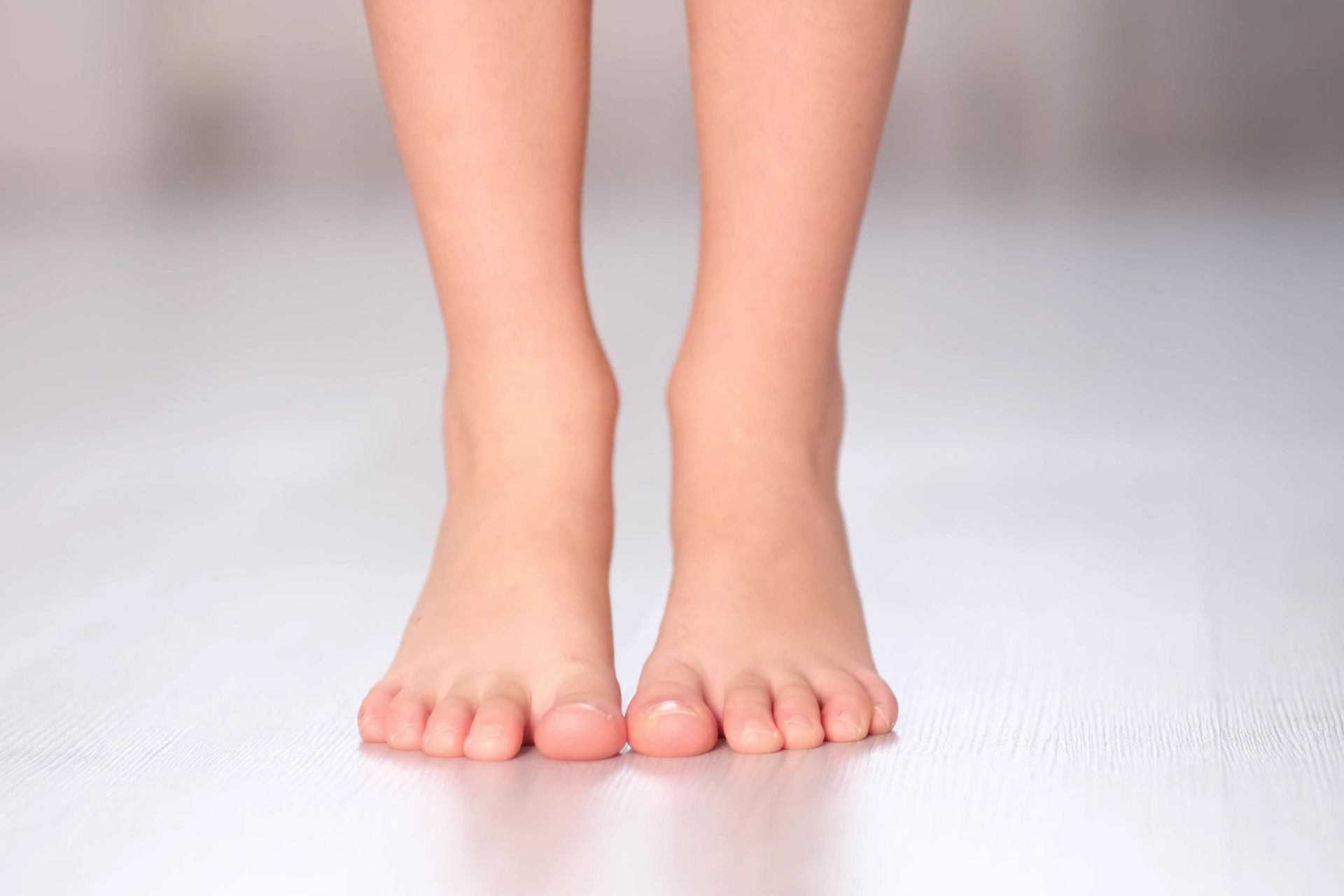Contrary to popular belief, bunions aren’t exclusive to the elderly. Podiatrists are increasingly seeing younger patients, some as young as 10 or 11, with juvenile bunions. This early onset of a condition typically associated with ageing has understandably raised concerns among parents, wondering what’s causing this seemingly unusual condition in their children.
Understanding Bunions in Children
Juvenile bunions, or adolescent bunions, are characterised by a prominent bump on the inside of the foot at the base of the big toe. Unlike adult bunions, which often develop due to ill-fitting shoes or arthritis, bunions in children frequently have a genetic component. This hereditary predisposition can lead to early bunion development, especially for kids with flexible ligaments and rapid growth during adolescence.
The impact of a juvenile bunion extends beyond aesthetics. Juvenile bunions can lead to long-term gait, balance, and overall foot health issues if left untreated.

Measuring Walking Patterns with Technology
Modern podiatric approach to bunions in children begins with a comprehensive assessment of the child’s foot structure, gait pattern, and overall biomechanics. This holistic view is crucial because juvenile bunions are often symptomatic of underlying biomechanical issues that, if corrected early, can prevent deformity progression and alleviate associated problems.
The RehaWalk Gait System is a groundbreaking tool in adolescent bunion treatment. This advanced technology provides an in-depth analysis of a child’s walking pattern, offering insights impossible to obtain through visual observation alone. The RehaWalk Gait System can capture every nuance of foot placement, weight distribution, and joint movement while walking through sensitive pressure plates and high-speed cameras.

For a child with a juvenile bunion, the RehaWalk Gait System can reveal crucial information about how the foot’s structure affects gait. It might show, for instance, that the child is developing overpronation, which can exacerbate bunion formation. It might also identify areas of unusually high pressure on the foot, indicating where support or cushioning is needed.
Complementing the RehaWalk system is 3D Gait Analysis, which provides a three-dimensional view of the child’s foot and lower limb movement. By capturing motion from multiple angles simultaneously, it offers a comprehensive picture of how the entire lower body is compensating for the bunion deformity.
The data gathered from these advanced diagnostic tools is invaluable in crafting a personalised child bunion treatment plan. It allows podiatrists to identify the bunion itself and the underlying biomechanical issues contributing to its development. This information is crucial in determining the most effective intervention, which often includes custom orthoses.
Orthotic Intervention to Redistribute Pressure
Orthoses are highly specialised devices custom-designed based on detailed information gathered from gait analysis. In this case, they aim to redistribute pressure away from the bunion, correct abnormal foot positioning, and provide support to the arch and other foot structures.
The effectiveness of custom orthoses in child bunion management lies in their ability to address the root causes of the deformity while accommodating the rapid growth of young feet. Unlike adult orthoses, children’s orthoses often need frequent adjustments to keep pace with growth spurts and changing foot structure.
Moreover, orthoses play a crucial role in the management and prevention of paediatric bunions. By correcting biomechanical issues early in life, these devices can alter the course of the deformity, reducing the likelihood that surgical intervention will be necessary in the future.
Comprehensive Management of Juvenile Bunions
In addition to orthoses, a comprehensive management plan often includes physical therapy exercises designed to strengthen foot muscles and improve flexibility. When combined with properly fitted footwear and activity modifications, these exercises can significantly reduce pain and slow bunion progression.
Paediatric podiatrists work closely with children and their parents, as education is key to managing and preventing juvenile bunions. This collaborative approach includes guidance on proper shoe selection, exercise demonstrations, and discussions about activities that may impact the condition.
The management approach for juvenile bunions differs significantly from that for adults, as children’s feet are still developing. This unique challenge requires expertise in paediatric foot conditions to tailor interventions that address the deformity without stifling the child’s natural growth.

While a child’s bunion can be concerning, modern podiatric care offers effective management and treatment options. The combination of advanced diagnostic tools and custom orthotics provides a powerful approach to addressing juvenile bunions, helping ensure that young feet develop into healthy, pain-free adult feet.
If your child is showing signs of juvenile bunions, schedule a consultation today with our expert paediatric podiatrists at The Foot Practice.







